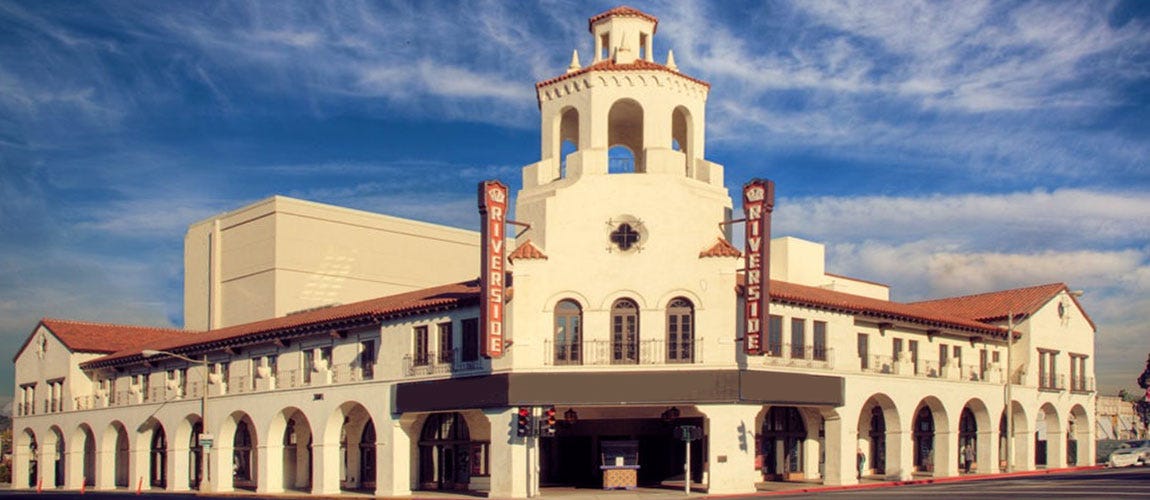
When was the last time we as an audience really looked forward to a movie hitting theaters? The Lord of the Rings movies were pretty huge. Star Wars movies, of course, were guaranteed once upon a time. What remains to be seen, though, is whether people will still be talking about when and where they first saw these movies decades down the line.
As of September ninth, it’ll be eighty-five years since Gone With the Wind was first seen on the big screen. It was a hot night in Riverside, California, and theatergoers turned out to sit in the nice, air-conditioned Fox Theater and see Beau Geste and Hawaiian Nights.
After Hawaiian Nights wound down, a special announcement was made: The audience would be the first to see a new movie. No one else would be allowed in the theater, anyone who left wouldn’t be allowed back in, and anyone who needed to call home should, because the movie was long.
The lights went down. The projector rolled the film. When Margaret Mitchell’s name came up, the audience roared with excitement.
Then, as now, there have been people who treat the novel and the film of Gone With the Wind with scorn because it portrays plantation life in a favorable light. For many, however, the story is a deft character study that represents grim determination and endurance. When Mitchell’s book was published in 1936, during the latter part of the Great Depression, Americans had been living with economic uncertainty for years and pulling oneself up by the proverbial bootstraps was a dicey prospect for many people.
Mitchell’s novel, which showed its characters hitting bottom with a vengeance and then rising back up, struck a chord with thousands of people. There had also been loads of buzz around Selznik International Pictures’ search for the perfect Scarlett O’Hara and everyone had an opinion, so Gone With the Wind was a very personal story.
Granted, what was shown at the Fox Theater on September ninth was a rough cut. Gone With the Wind had no score, no final titles, and the porch scene with Scarlett and the Tarleton twins would have to be reshot. But it was Gone With the Wind come to life. The audience sat in rapt attention from beginning to end. Producer David O. Selznik sat in the back and took it all in.
Opinions of the film were across the board. Some thought there weren’t enough battle scenes, or too many of them. One gentleman thought the carpetbagging aspect of the story should be played up. One woman said Bette Davis would make a much better Scarlett O’Hara than Vivien Leigh. Still another thought Butterfly McQueen’s voice was too inaudible. Overall, people loved the film.
Why was Gone With the Wind previewed in Riverside? At the time the town was a cross-section of blue collar workers, white collar workers, farmers, shopkeepers and pretty much everyone else of every income level, so it was a safe bet for getting lots of different kinds of opinions and Hollywood liked using the Fox Theater for surprise previews. The Fox Theater went strong until the sixties, but unfortunately stood abandoned for many years until it was restored and now thrives today as the Fox Performing Arts Center.
Gone With the Wind would have its big, formal premiere in December of 1939 with all the stars in attendance, as well as Margaret Mitchell herself, but the people of Riverside got to make their own mark on the movie’s history, which the city is very proud of to this day.
Gone With the Wind can be seen on select screens and is currently streaming on Max. Not rated.
My grade: A+
Principal Cast: Vivien Leigh, Clark Gable, Olivia De Havilland, Leslie Howard, Thomas Mitchell, Barbara O’Neil, Evelyn Keyes, Ann Rutherford, George Reeves, Fred Crane, Hattie McDaniel, Oscar Polk, Butterfly McQueen, Victor Jory, Everett Brown, Howard Hickman, Alicia Rhett, Rand Brooks, Henry Davenport, Cammie King, Carroll Nye, Laura Hope Crews, Eddie ‘Rochester’ Anderson, Jane Darwell
Directed by Victor Fleming.
Written by Sidney Howard and Margaret Mitchell (novel)
For further info:
“The Making of A Legend: Gone With the Wind.” Narrated by Christopher Plummer. Directed by David Hinton. Turner Entertainment, 1988.



